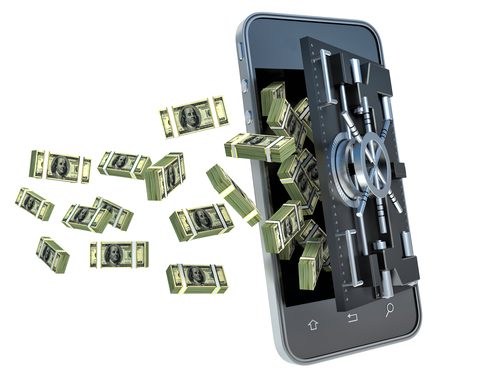Just a few decades ago, most people tracked their financial transactions by recording them in a checkbook; now, the internet has made life without a checkbook possible. Automating your finances nowadays is easier than ever. Here are a few simple tips for making it happen.
Automate Your Budget
If you ever wanted to lose weight, how would you track your progress without a scale? Setting financial goals without a budget is a lost cause because you’re essentially flying blind. But at the same time, creating a spread sheeting and taking time to log every dime spent and saved is a major inconvenience.
- You Need a Budget (YNAB) – For $50 per year, YNAB brings easy budgeting to your smartphone, where a simple app helps you track spending vs income to make sure financial goals are met. Users can earmark categories like gas or groceries to see exactly where the money is going.
- Mint – Mint is similar to YNAB with two noteworthy perks: it’s a free service and purchases are automatically logged when you link your financial accounts. Don’t worry, Mint is a very reputable service with a secure website, so your accounts are safe.
Automate Your Expenses
Now that you have a budget and know what you can spend, it’s time to automate your living expenses.
- Rent, utilities and other services with online pay will have likely have an auto-pay feature. Link your debit or credit card to make it automatic each month.
- Banks will almost always have automatic bill pay services for expenses that don’t have auto-pay of their own.
- Make tracking easy by setting every auto-payment to the same day of the month (make sure you have money set aside to pay all your bills on this day).
- Apps like Venmo and Square make paying back friends and family easy without going to an ATM or writing a check.
Automate Your Savings
Once you’ve covered the essential expenses — rent/mortgage, electricity, water — the next person you should pay is yourself. Remove the temptation of spending savings elsewhere by making it automatic.
- Set up reoccurring transfers through your banks website for each payday.
- You can usually earmark what each deposit is for to save for different goals (emergency fund, vacation, down payment on a house/car, etc.)
- Build an emergency fund of 3-6 months worth of expenses first.
- You can also set up automatic deposits to a Roth or traditional IRA for a speedier retirement.
Automate Your Income
These are all great ways to automate money going out, but what about money coming in. While there’s no such thing as effortless income, residual income is a very real way to earn an income.
- Network Marketing – Companies like Amway are popular for earning supplemental income, all the way to a full-time residual income. Networking requires persistence and social skills, but many people are very successful with network marketing.
- Rental Properties – Buying a home or condo for renting is a serious investing, but if you’re willing to be a good landlord, it will give you a return over time.
- Freelance Retainment – If you’re a skilled writer, there are websites that love to keep regulars writing for their blogs. Find a topic you’re interested in and reach out to your favorite sites to offer sample work (you may have to write a few free pieces first).


Good article – one thing I’d note is that multilevel marketing companies like Amyway or LuLaRoe tend not have sustainable income – they’ll show some results, but then people will get tired of hearing from you. I have had several friends who got involved in MLM and its highly controversial – best to be avoided.
Instead, it makes sense to invest in good quality common stocks. Consider getting automatic deduction into your brokerage or retirement account to get some good mutual funds, ETFs or index funds.
I honestly believe mint.com is amazing. I am using it for almost 10 years now and I don’t know the better way to track all my assets and liabilities together and get a daily update for all of them. Totally agree with you.